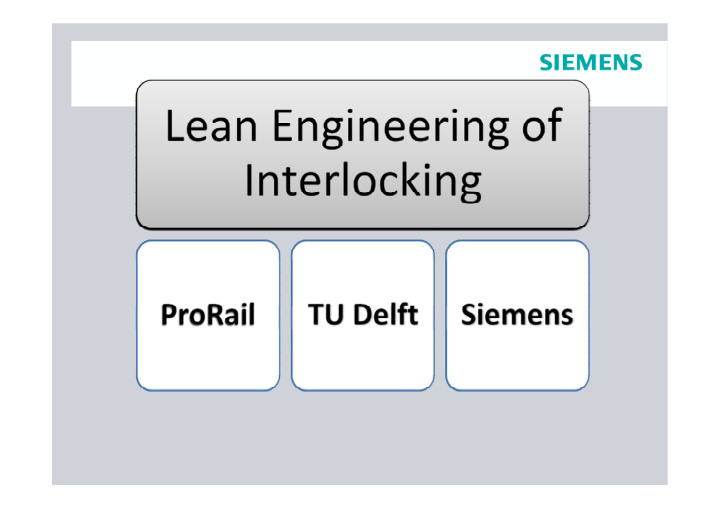



Goals
Status Quo
Modelling Tenets
ProRail track plans 1. Can mostly be mapped to the Infrastructure schema 2. Contains relations for use by the Interlocking schema • LX – announcement • Flank protection • …
Data quality is essential
Signals are nodes and objects
ProRail Signal Plan • Signal aspects relate to routes • Interlocking sets signal aspect plus speed code according to signal plan • Routes – can be composed from atomic routes – very much like linked lists – NO need to capture composite routes
Conclusions and recommendations (1)
Interlocking Process (V-)Chain
Interlocking Engineering Design
Interlocking Engineering Design The Status Quo
Interlocking Engineering Design • Design – Fluctuating requirements – Many and ambiguous processes – Error prone, i.e. many parties and manual transfer – Design from scratch • Engineering – Considerable fixed costs – Input variety => niches and many tests – Data translation imposes challenges • General: Time is cost driver!
railML’s Transformation of Chain
Performance Measurement: Lean • Benchmark needed • Womack and Jones (1996) introduce Lean Production • Lean Engineering Design unexplored • Transformation strategies plausible
Performance Improvement
Conclusions for railML in Interlocking Engineering Design (2) • railML especially successful to reduce: – Complexity – Non-value added time – Validation cycles • railML lacks improvement potential on: – Cost – Productivity – Risk – Non-value added work
Success factors • Single database • Non black box - visualization • Safety case • Integration with other signaling systems and engineering parties • railML v2.2 progress • Best practice • Transformation strategy
Recommend
More recommend